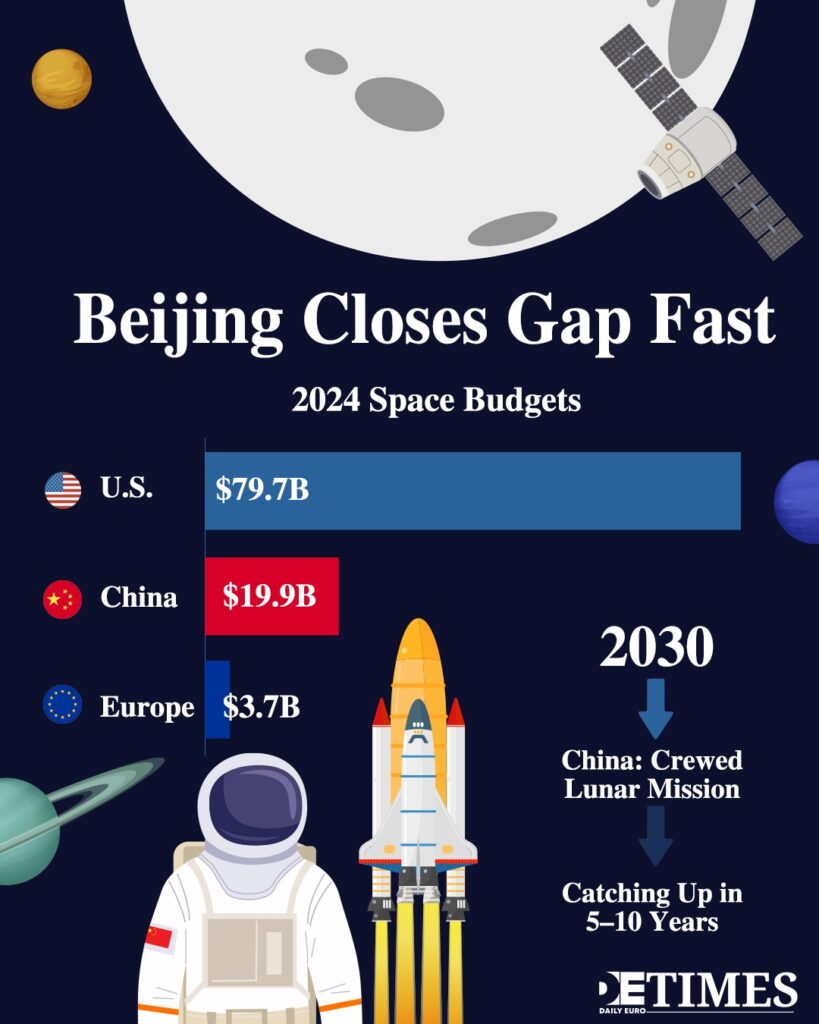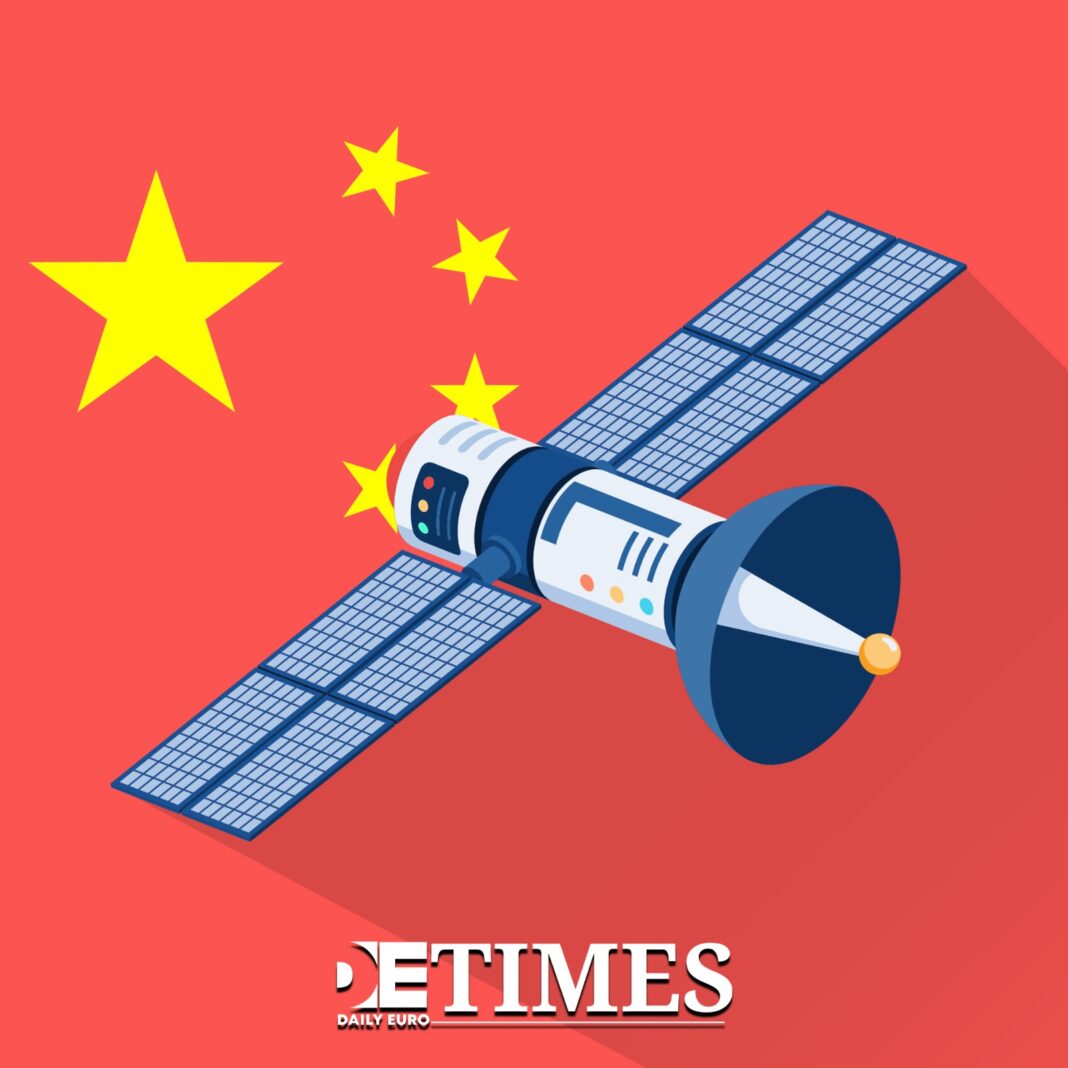The European Commission sealed its IRIS² satellite constellation contract with the SpaceRISE consortium in October 2024. This €10.6 billion agreement brings 290 satellites across multiple orbits under European control by 2030.
The timing proves telling as analysts warn that China could overtake American space capabilities within five to ten years. European policymakers now race to secure their continent’s position before this transformation reshapes orbital economics entirely.
Brussels Chooses Strategic Autonomy
The IRIS² programme represents Europe’s largest space infrastructure investment. SpaceRISE consortium members including SES, Eutelsat, and Hispasat will deliver secure communications for government and commercial users.
Core contractors Thales Alenia Space and Airbus Defence will manufacture the satellites. The twelve-year concession begins with contract signature scheduled for December 2024.
European Space Surveillance and Tracking services already protect over 500 satellites for more than 200 organisations. IRIS² will multiply this capability across civilian and government sectors.
Beijing’s Accelerating Trajectory
China’s space expenditure totalled $19.89 billion in 2024 compared to America’s $79.68 billion and Europe’s $3.71 billion. Yet Beijing’s trajectory suggests parity with American capabilities by 2030.
Chinese officials released their space science development programme for 2024-2050 in October. The plan outlines seventeen priority areas under five scientific themes including extreme universe exploration and habitable planet research.
China schedules crewed lunar missions for 2030. This timeline positions Beijing to become only the second nation placing astronauts on lunar soil.

Economic Foundations Drive Space Power
European decision-makers recognise that space infrastructure underpins economic sovereignty. China’s rapid advancement stems from sustained investment rather than technological superiority alone.
Beijing maintains consistent funding across decades while American programmes face budget volatility. European planners now apply similar long-term thinking to IRIS² development.
The constellation will provide encrypted communications for financial services, transport networks, and energy infrastructure. These capabilities reduce European dependence on American or Chinese satellite operators.
Strategic Partnerships Beyond Rivalry
Europe maintains collaborative relationships across space activities. The Solar wind Magnetosphere Ionosphere Link Explorer mission launches in 2025 as a joint China-ESA project.
Such partnerships demonstrate that space development need not follow zero-sum competition models. European policymakers separate technical cooperation from geopolitical disputes.
IRIS² development will create industrial partnerships across European Union member states. This approach builds manufacturing capacity while distributing economic benefits geographically.
Commercial Realities Shape Policy
Satellite communications generate substantial revenue streams for operators and manufacturers. European companies previously relied on partnerships with American firms for global coverage.
IRIS² enables European operators to compete independently in commercial markets. The constellation will serve government customers while generating income from corporate clients.
SpaceRISE consortium members bring established customer relationships and operational experience. This foundation accelerates deployment compared to starting from zero capabilities.
Technology Transfer Accelerates Development
Chinese space achievements build upon decades of international collaboration and domestic research. European programmes similarly benefit from accumulated expertise across member nations.
IRIS² incorporates technologies developed for Galileo navigation satellites and Copernicus Earth observation systems. This integration reduces development costs while improving performance.
Private sector participation brings commercial efficiency to government programmes. European space companies compete globally while supporting continental strategic objectives.
Orbital Economics Reshape Global Power
Space capabilities increasingly determine economic competitiveness across terrestrial industries. Countries lacking independent satellite access face structural disadvantages in communications, navigation, and Earth observation.
IRIS² positions Europe as a space power rather than a customer of American or Chinese systems. This transformation requires sustained political commitment across changing government cycles.
European success depends on maintaining investment levels while Beijing and Washington compete for space leadership. The IRIS² programme provides the foundation for this long-term strategic positioning in an era of accelerating orbital development.
Keep up with Daily Euro Times for more updates!
Read also:
Made with Plasma: Russia’s New Mission to Mars
Solar Power: Europe Aims High While America Goes Practical
SpaceX to the Rescue, NASA Flags Boeing’s Failures



